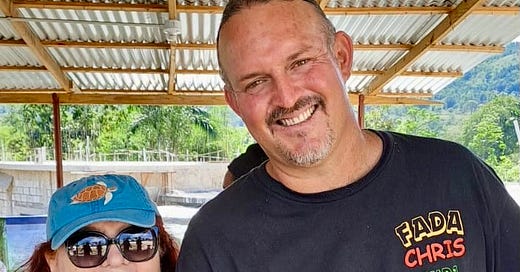We took a break yesterday, embarking on a day trip to the wilds of Westmoreland - quite a distance from Kingston. Our exciting day was brilliantly organised by the Caribbean Community of Retired Persons, a non-governmental organisation simply known as CCRP, for members and their friends.
Westmoreland is a parish that I confess I am not very familiar with, especially the interior. I know that its coastline is brilliant, usually calm, aquamarine blue. Anyway, this time we ventured to Seaford Town (in a bus). As we entered the parish, the road surface deteriorated considerably; however, our skilful driver negotiated the potholes cheerfully, as the bus wound through beautiful forested hills. We were now in what we call “deep rural Jamaica.”
After a good rest stop (with tasty Jamaican pastries, rock cake and gizzada) in the town of Mandeville, we pottered on. We endured some delay, thanks to the waving flags from the Jamaica Public Service Company, who saw fit to essentially block traffic on a main road on a busy Saturday morning. But we got there in the end.
From the moment we left the bus, warm sunlight, music and sweet aromas greeted us. We had at last arrived at “Fada Chris Endz” (“Where the food and the vibe is right”) situated on a farm in the small community of Seaford Town. Commonly known as “German Town,” it was founded by a wealthy planter, Member of Parliament and “owner” of over 1,000 enslaved people, Baron Seaford. Apparently the Baron wanted to encourage white Europeans to immigrate to Jamaica; he was certainly not an abolitionist. In a fascinating talk by a community member, we learned that National Hero Sam Sharpe’s “Christmas rebellion” of 1832 caused the Baron severe losses. He donated 500 acres of land from his Montpelier estate for the founding of a village for German settlers in 1835 - the year after the abolition of slavery in Jamaica - and promptly departed.
Why did Germans end up settling there? About 250 were brought in to Seaford Town, with various skills. With migration the population has not grown much, and according to Mr. Chambers, the community member, only about 15 residents can claim direct descent from the original settlers. We met some of them. We learned that some Jamaican names - Kameka, Hacker, Minto, Eldemire - come from this German connection. The community is mostly Roman Catholic; the first thing the settlers did was build a church, the Sacred Heart. We were told emphatically that the church still has great influence in the community.
But - you want to know about Fada Chris, don’t you? Well, he has established a flourishing business there, roasting pigs on spits over a charcoal fire. The result is something delicious, juicy and spicy - oh, and crunchy too. This simple concept has developed into a tourist attraction - one I would heartily recommend to visitors, as Montego Bay is just 25 miles away. There were not only roasting pigs; we also ate tasty jerk chicken, curry goat, escoveitch fish and other local dishes. There was local honey for sale, as well as provisions from the farm - pineapples, papaya and plantains, which are the main crops grown in the area.
Fada Chris himself is tall - 6 feet 7 inches tall. I realised this when I grabbed a photo op with him. He posed with the chopper with which he cuts up the pigs; he has a rather fierce expression when he does this, but when posing for numerous photo ops with members of our group, he has a lovely smile. Two young men worked with him - one was his son, a serious teenager who collected the money.
Quite reluctantly, we piled into our bus to return to Kingston, just as the afternoon was settling down. We were rather full of food and sunshine, and the Fada Chris “vibe.” All of that took us happily back to Kingston, after a thoroughly satisfying day.





Love it! Missed the adventure! You brought the excursion to "deep rural" to life....Oh for some of dat....and thenother stuff too.